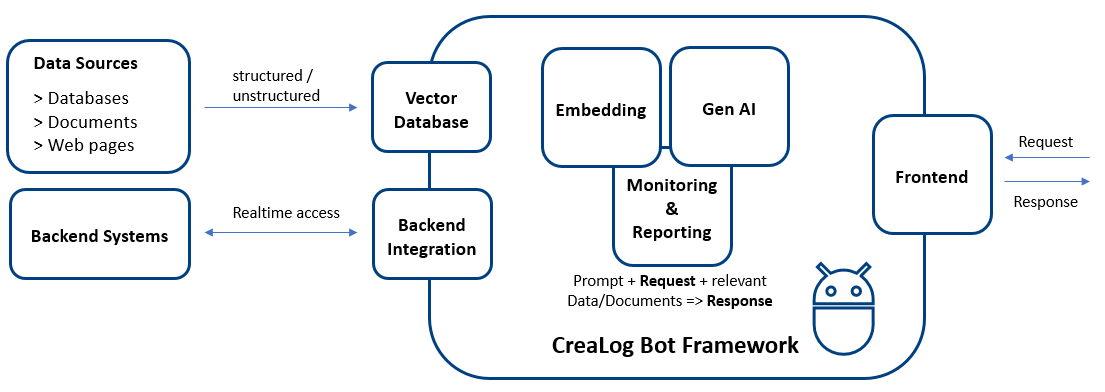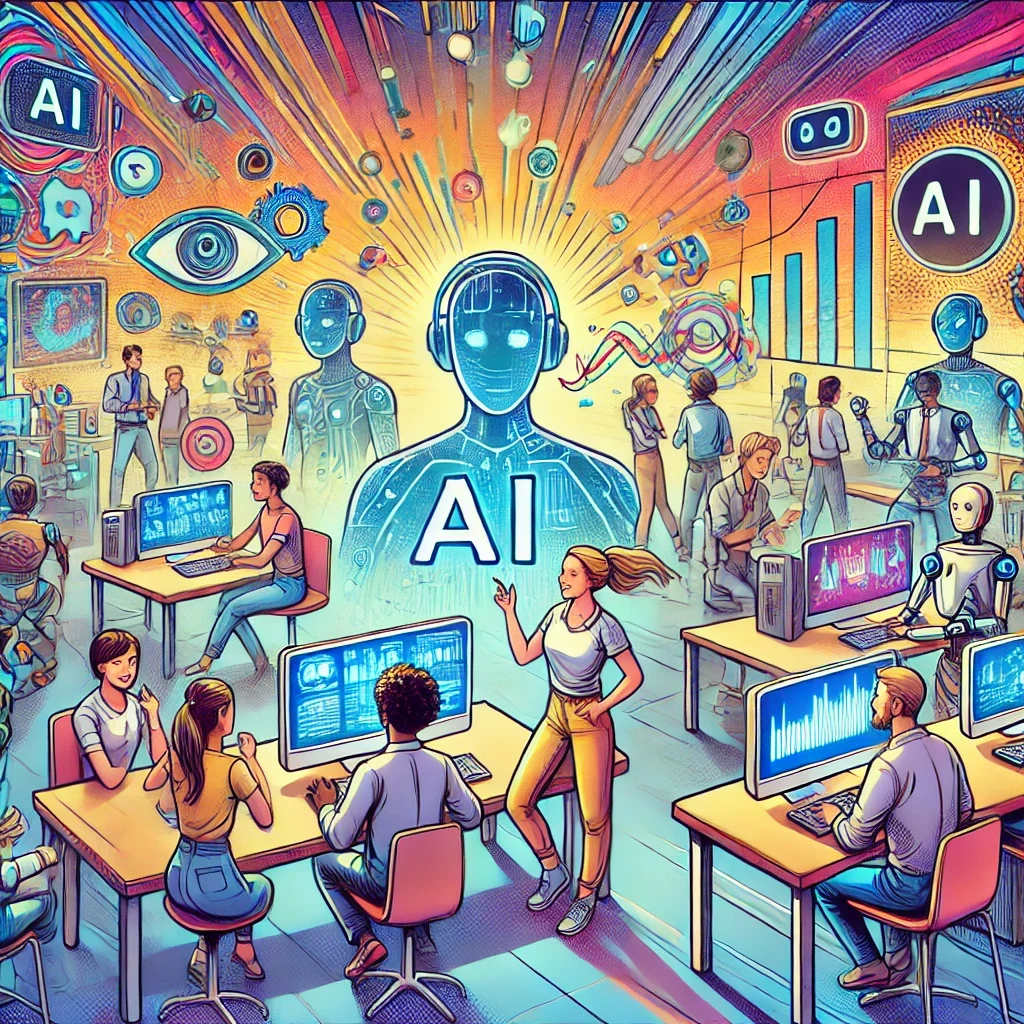
The emergence of generative AI and Large Language Models (LLMs) has unlocked entirely new possibilities for bots, making interactions more natural, versatile, and efficient. Various providers offer AI models that can be flexibly integrated into different applications.
Most of these models are cloud-based, while some can also be deployed on-premises. Regardless of whether they are used in the cloud or locally, compliance with GDPR and the EU AI Act is essential to ensure adherence to legal and ethical standards.
Generative AI can support and expand bot capabilities on multiple levels:
1. Assisting in Bot Development
2. AI Assistants for Interaction
3. Retrieval-Augmented Generation (RAG)
For complex systems with large, customized datasets, RAG architecture provides a particularly flexible solution. It combines generative AI with efficient information retrieval from knowledge sources.
A RAG system consists of two core components:
1. Embedding (Data Processing and Storage)
2. Generating Responses

The use of generative AI must comply with ethical and legal regulations, such as GDPR and the EU AI Act. Handling sensitive data and responding to critical inquiries requires full transparency.
The CreaLog Bot Framework provides advanced monitoring and analysis tools, ensuring:
Generative AI, powered by advanced models and architectures like RAG, is revolutionizing how bots process information, retrieve knowledge, and interact with users. By combining real-time data, intelligent analysis, and personalized responses, AI-powered bots create more efficient and engaging interactions, setting new benchmarks in digital communication.
